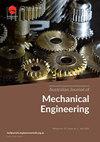Solar thermal reactor model for pyrolysis of waste plastic
IF 1.3
Q3 ENGINEERING, MECHANICAL
Australian Journal of Mechanical Engineering
Pub Date : 2023-10-30
DOI:10.1080/14484846.2023.2275034
引用次数: 0
Abstract
The ability to convert waste plastic into combustible liquids and gases using solar energy could help transform the problem of disposal of non-recyclable plastic into a valuable and environmentally responsible source of fuel. The purpose of this study is to propose a practical model for a compound parabolic trough solar thermal reactor for pyrolysis of waste plastic. The model integrates predictions of energy available from solar radiation (at a given location, time of day and time of year) with parabolic trough collector orientation and efficiency, a transient energy balance for an evacuated tube reactor and pyrolysis kinetics of waste plastic. The experimental setup used to test the model includes a pyranometer, a commercial solar collector consisting of a 60 cm long evacuated tube with a compound parabolic reflector and multi-channel data loggers to collect temperature, humidity and radiation data. The solar radiation sub-model was found to be in excellent agreement with clear-sky irradiance data collected using the pyranometer. Predictions of reactor temperature and reaction rate were found to be sensitive to the concentrator aperture area, solar irradiance, type of plastic (Arrhenius kinetics) and radiation properties of the evacuated tube reactor but relatively insensitive to humidity, wind velocity and terrestrial irradiance. The model shows that even on a small scale, favourable conditions for pyrolysis of waste plastic can be achieved within a solar reactor.废塑料热解的太阳能热反应器模型
利用太阳能将废塑料转化为可燃液体和气体的能力可以帮助将不可回收塑料的处理问题转变为有价值且对环境负责的燃料来源。本研究的目的是提出一种实用的复合抛物面槽太阳能热反应器用于废塑料热解的模型。该模型将太阳辐射(在给定地点、一天中的时间和一年中的时间)的可用能量预测与抛物线槽收集器的方向和效率、真空管反应器的瞬态能量平衡和废塑料的热解动力学相结合。用于测试该模型的实验装置包括一个高温计、一个商用太阳能集热器,该集热器由一个60厘米长的真空管和一个复合抛物面反射器组成,以及用于收集温度、湿度和辐射数据的多通道数据记录器。太阳辐射子模型与利用太阳辐射计收集的晴空辐照度数据非常吻合。发现反应器温度和反应速率的预测对浓缩器孔径面积、太阳辐照度、塑料类型(Arrhenius动力学)和真空管反应器的辐射特性敏感,但对湿度、风速和地面辐照度相对不敏感。该模型表明,即使在小范围内,在太阳能反应器内也可以实现废塑料热解的有利条件。
本文章由计算机程序翻译,如有差异,请以英文原文为准。
求助全文
约1分钟内获得全文
求助全文
来源期刊

Australian Journal of Mechanical Engineering
ENGINEERING, MECHANICAL-
CiteScore
3.70
自引率
7.10%
发文量
77
 求助内容:
求助内容: 应助结果提醒方式:
应助结果提醒方式:


